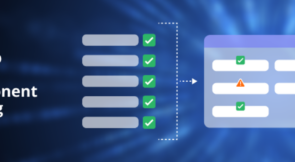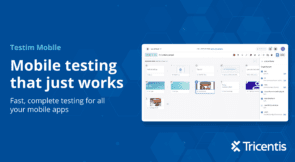Have you been a software developer for a reasonable amount of time? If so, then you’ll likely remember the time when CI (continuous integration) and CD (continuous delivery/deployment) were new concepts. In the world of source control tools, Git was still the new kid on the block. Continuous deployment tools were something only the companies at the bleeding edge of technology would use.
Today, CI/CD is just the regular way of doing things. Just like automated testing, CI/CD went from being a fringe concept to accepted practice. But that doesn’t mean they’re universally adopted. Many developers or companies don’t embrace those practices for many reasons, among which lack of knowledge reigns supreme.
This post is here to help you with that front. We’ll walk you through a list of seven continuous deployment tools you need to make your software development process as fast and reliable as it can be.
To Go Fast, You Need…
Before we move on to our list, let’s start with a caveat. This isn’t a comparison post. So, you won’t be seeing any of that “Circle CI versus Travis CI” type of thing today. This post will show you seven categories of tools you need to implement a reliable CI/CD pipeline. We’ll mention at least one tool for each category, so you know where to look when it’s time to go shopping.
A Version Control Tool
As you’re probably aware, CI basically means having developers integrate their work to a shared location as often as possible since doing so dramatically reduces the likelihood of conflicts. However, before they can integrate, developers must be able to isolate. That is, they need a mechanism that allows them to code fearlessly, without worrying that they might break the application and harm their colleagues.
Expand Your Test Coverage
That’s where version control tools come in handy, since providing such sandboxes is one of their main features. And though there are many version control systems out there, few people nowadays would argue against Git being the way to go. It has become the de-facto industry standard when it comes to version control tools, mainly due to the popularity of GitHub, but also due to its speed and its powerful branching and merging capabilities that are especially suited to working asynchronously.
A Source Code Repository Tool
You can think of Git as the first step on the stair to a CI/CD pipeline. What would be the second step? To have a place to put your code and manage it. That’s what tools like GitHub and GitLab do, in the simplest terms. Sure, you can create your own Git server, for instance, but I’d argue that it’s a waste of resources.
With mature tools such as GitHub or GitLab, you can do much more than just store code. They allow you granular access control to prevent people from accessing projects they aren’t authorized to see. Both tools have powerful documentation capabilities: Both allow the creation of wikis, and with GitHub, you can host a full-fledge documentation site per repository in the form of GitHub pages—for free. Both tools offer issue trackers, so you can easily manage the project’s tasks, whether they refer to bugs or new features.
A Unit Testing Tool
Unlike other forms of software testing like end-to-end testing, unit testing isn’t meant to emulate the application’s real usage. Instead, unit testing allows the individual parts of the application to be tested in complete isolation. This brings interesting advantages. Since unit tests don’t interact with external dependencies, they’re usually faster than other types of tests, which encourages developers to run them often. That way, a suite of comprehensive unit tests becomes a safety net against regression bugs. This is priceless in a scenario where you’re trying to integrate and deploy changes as quickly and often as possible.
The choice of tool will obviously depend on your tech stack. If you’re a Java developer, JUnit is most likely what you’ll use. The same thing goes for .NET and NUnit, though xUnit.net is also a strong contender. In JavaScript Land, things are more complicated. There’s a larger variety of tools, though there seems to be a consensus these days around Jest being the best framework.
One or More Linters
Linters are another category of tools that play an important role in ensuring source code quality. But what’s a linter?
In the simplest possible terms, a linter is an automatic code checker. Though there are many different types of linters available, they all offer some form of verification that leads to the improvement of your code. You can use linters to check your code against code formatting standards, to check for problems or symptoms of problems (code smells), and more.
In JavaScript, two of the most known linters are ESLint and JSHint. Ruby developers have RuboCop at their disposal, while Pythonists can use PyLint, though alternatives exist for both languages.
A Feature Flagging Tool
A technique that I see as essential for CI/CD and that doesn’t get as much attention as it should, in my view, is feature flagging.
Feature flags are mechanisms that allow developers to switch a portion of a codebase on and off in production. This ability allows developers to frequently merge their work in progress to the mainline without worrying about the clients accessing unfinished features.
There’s more. For instance, you can hide a certain feature behind a flag while allowing only people from a specific group to see the feature. That way, you can allow people from the organization to test in production while preventing the new feature from being accessed by regular users.
And how are feature flags actually implemented? Though you can go with a manual approach, such as storing the values for the flags in config files and then checking them with if instructions in the code, you’re generally better off with a proper feature flagging management solution, such as CloudBees Feature Management (formerly Rollout) or LaunchDarkly.
A CI Tool
To implement CI/CD, you’ll certainly need a CI tool. Solutions such as Travis CI, Circle CI, GitLab CI, among others, are at the center of a CI/CD pipeline.
By using such a tool, teams can configure automatic builds that trigger every time a developer merges their code to the mainline (or their pull request is approved.) But you can—and should—do way more than just building your software. It’s also possible to add more steps to the process, running more processes during the build. For instance, most of your automated tests should run during those builds.
If you want to take the next step and reach full-fledged continuous deployment, CI/CD tools can also help you since they offer the possibility of partially or completely automating the deployment of the application. So it’s entirely possible to deploy to production every time someone checks in code, and all of the tests and checks pass successfully.
A Codeless Test Automation Tool
We’ve seen how big a role unit testing plays in enabling CI/CD. Make no mistake, though. Unit tests aren’t the only type of tests that you need. It’s crucial to leverage testing types that test the application as a whole, closer to how a real user would interact with it. End-to-end (E2E) testing is one of those types of testing. And since we live in an era when everyone performs software testing, it’s important to employ tools that don’t require coding skills.
Testim is one such tool that operates in a hybrid manner. It does offer users the possibility of editing test scripts via code. But it can also be used by people with no coding experience at all as a record-and-playback tool. However, unlike most other fragile tools, Testim tests are robust and don’t break easily due to AI capabilities that ensure test stability.
Continuous Deployment Tools: Go Fast, Don’t Break Things
Software companies these days can’t afford to be slow. They also can’t afford to ship low-quality code. That’s why they must use any opportunity they get to improve their software development process. Such opportunities include testing as early as possible in the process and integrating their QA process into their CI/CD pipelines.
Speaking of CI/CD pipelines, you’ve just learned more about them. More specifically, we’ve walked you through a list of seven tools you can use to help make continuous deployment easier in your organization. Happy (and speedy) deploying!











